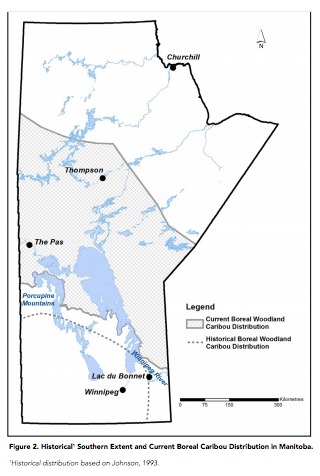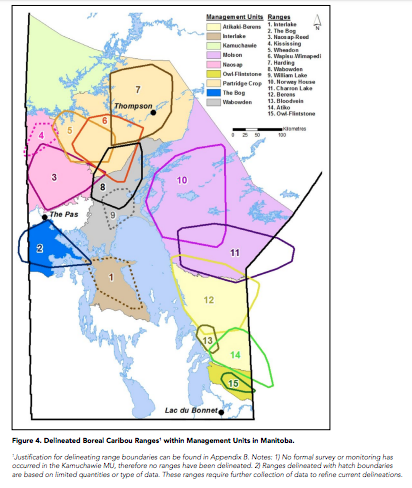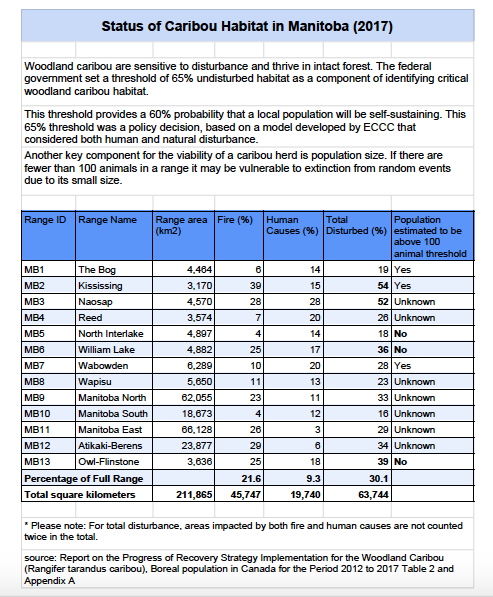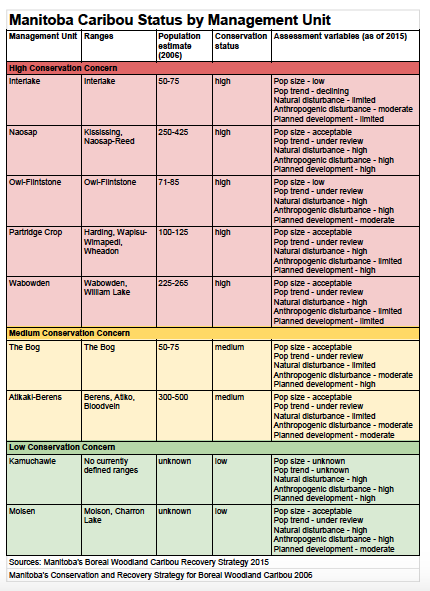Caribou in Manitoba Facts
Manitoba’s woodland caribou were declared a vulnerable species in 1984 and were placed on the province’s endangered species list in 1994.
Habitat disturbance is considered the primary threat to woodland caribou, which need large tracts of intact forest to survive.
The historic range of woodland caribou in Manitoba used to include Duck Mountain and the Whiteshell. The recent loss of the Swan-Pelican Lakes caribou herd has shifted the range border even farther north.
An estimated 1,500 to 3,100 woodland caribou roam Manitoba’s boreal forest. The province has designated 13 ranges which encompass 211,865 square kilometers.
Why now
A recent federal assessment warned that we will lose more than 30 percent of the Canada’s woodland caribou by 2033. The last remaining caribou herd in the contiguous United States–which used to migrate across the border into British Columbia–became functionally extinct in 2018.
British Columbia and Alberta are spending millions to build birthing pens, restore habitat and protect endangered herds. Some scientists fear it may be too late given that caribou habitat disturbance rates in those provinces range from 55 to 96 percent.
If Manitoba acts now, we can save more caribou at a far lower economic and social cost.
Working together, we can save Manitoba’s remaining caribou
Some 30 percent of the remaining woodland caribou habitat in Manitoba has been disturbed by fire and human activity.
Ten of the 13 woodland caribou ranges in Manitoba are sufficiently intact to support the sensitive animals which need large tracts of forest to survive.
The federal government is supporting the participation of communities and stakeholders in accelerating the development of provincial caribou management plans.
Working together, we can ensure that caribou management plans are effective for caribou and other boreal wildlife, and meet the needs of Indigenous Nations, local residents and regional economies.
Why Protect Caribou?
Woodland caribou are a strong indicator species for the health of the broader boreal: they’re sensitive to disturbance, and thrive in intact forest.
Conserving the large swaths of intact boreal forests that caribou need to survive will:
- preserve a cherished way of life for rural residents and First Nations;
- protect critical habitat for other species of concern like moose and the star-nosed mole;
- and help slow the effects of climate change.
By protecting caribou, you are protecting your future.


Working together we can protect our lands, our animals and the treasured lifestyles, cultures and sustainable economies which depend upon a healthy boreal forest.
Partnering to Protect Caribou © 2019


